Kabayan Filipino Restaurant: Filipino roasted pork with garlic rice & cai fan with over 20 dishes
Whenever the topic of Filipino cuisine comes up, I can only think of lechon (roasted pork) and Jollibee. Sounds familiar? Well, I’m not alone among Singaporeans who are unfamiliar with much of cuisine from Asia’s pearl of the orient. That’s changing as I headed to Kabayan Filipino Restaurant at level 3 of Lucky Plaza, determined to acquaint myself more with this cuisine.
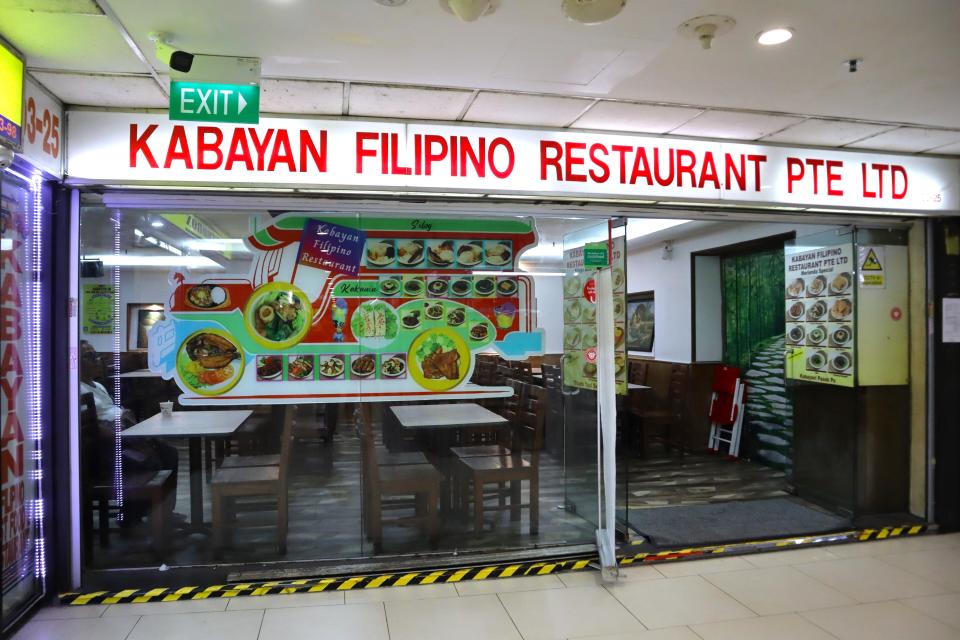
I brought along Kai Le, our intern, who has many Filipino friends, making her the perfect companion for my first Filipino food adventure. We headed to Lucky Plaza on a sleepy Monday morning, and there wasn’t much activity going on.
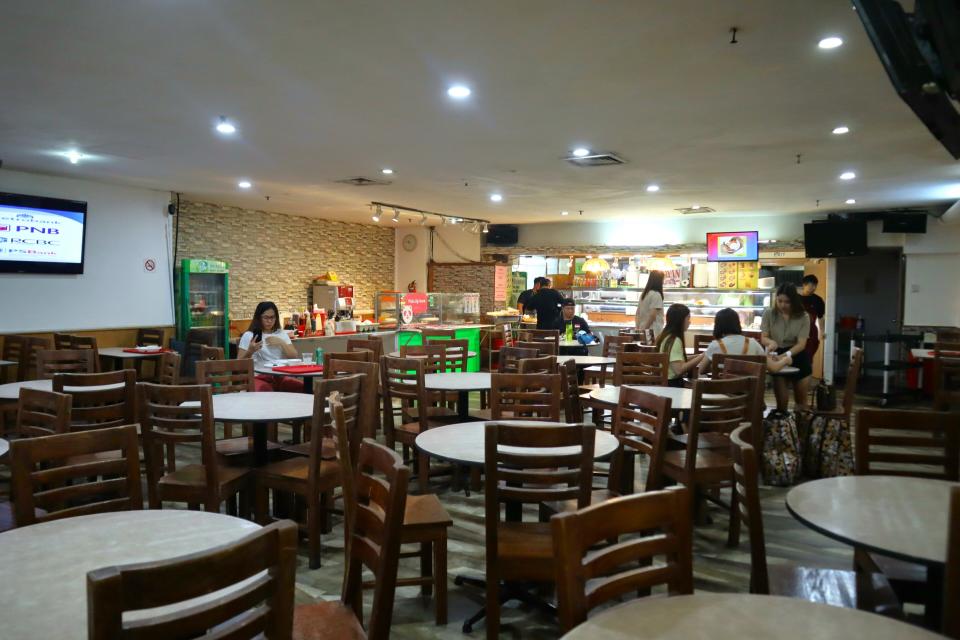
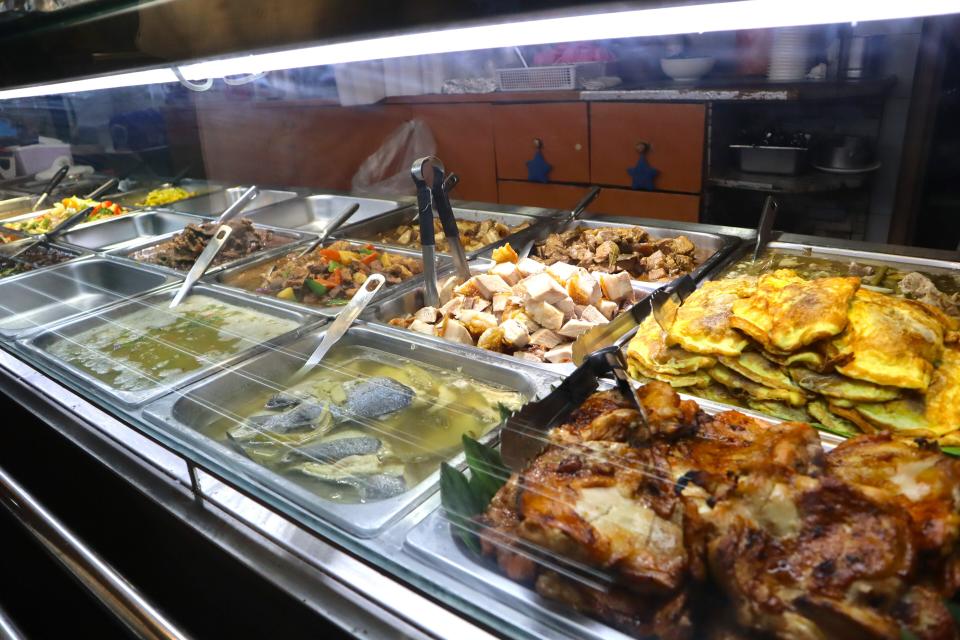
Inside Kabayan Filipino Restaurant, the self-service setting resembled our typical kopitiam cai fan stall, where you had to head to the front to choose your dishes. Over 20 dishes were proudly displayed in the glass showcase. Since it was only about 10-ish in the morning, the kitchen crew was still busy firing dishes to fill up the empty containers.
What I tried at Kabayan Filipino Restaurant
I stood in front of the menu for a good 5 minutes, attempting to decipher the foreign-sounding dish names like tapsilog, tosilog, sisig, and bangus with the provided illustrations, but it only left me more confused.

We started off with something I was familiar with from one of the standard sets on the menu, the Lechon Kawali with Egg & Garlic Rice (S$10.50). While I was familiar with lechon, I pondered over the term ‘kawali‘. It turned out to mean frying pan, which coincidentally sounded the same in Peranakan/Malay to describe a wok.
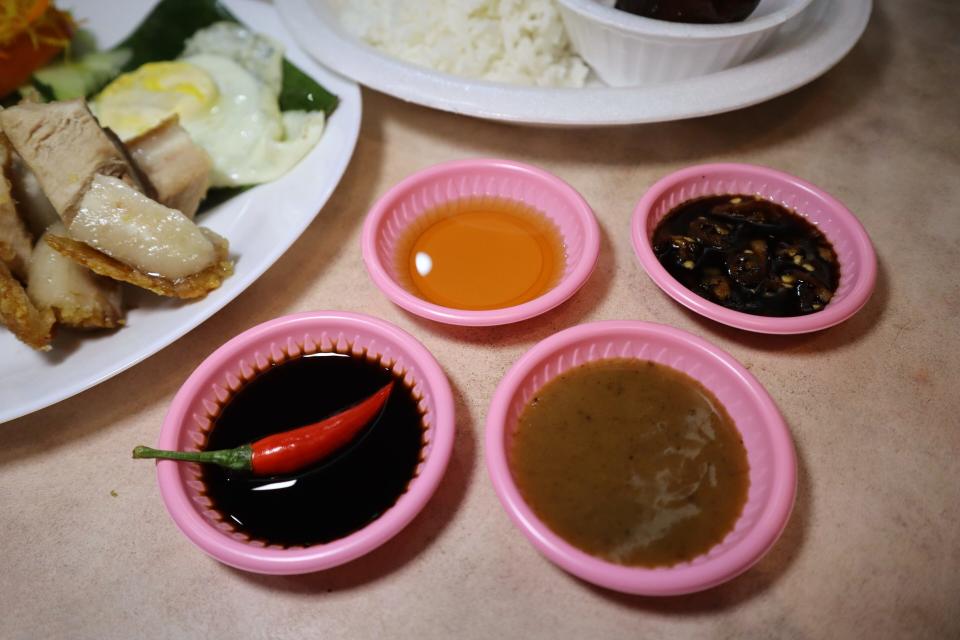
We helped ourselves to the condiments section. Starting in an anti-clockwise direction, the first was soy sauce with chilli padi, followed by the thick light brown sauce that Kai Le referred to as an all-purpose sauce. Next was a mixture of black vinegar, green chilli, and onions, and the last was fish sauce.
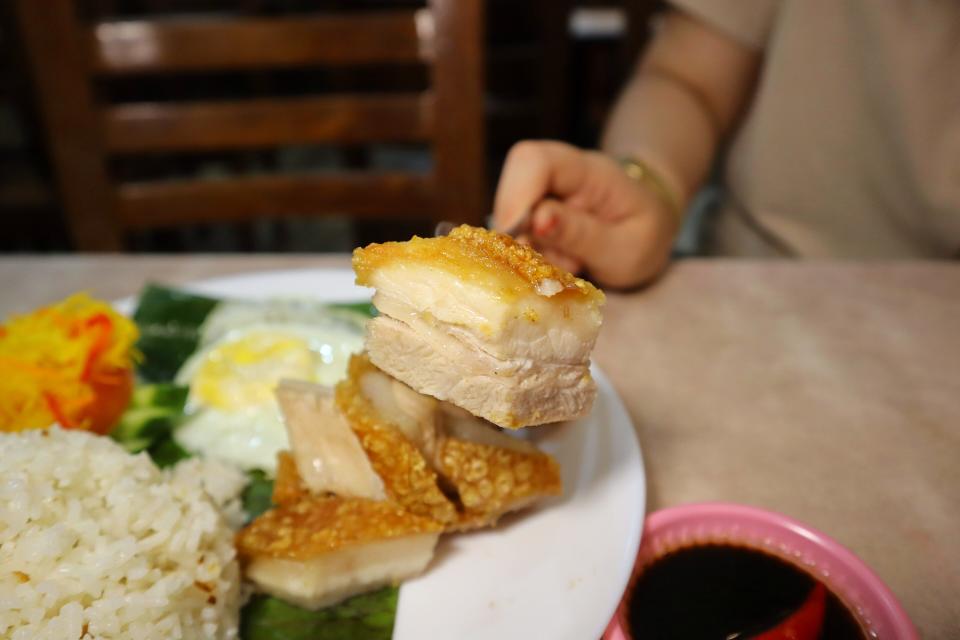
The first chunky piece of roast pork boasted a crispy, crackling skin reminiscent of the babi guling (suckling pig) that I had in Bali. In a peculiar way, it felt like I was chewing on glass. The meat was tender, and the fat just below the skin turned creamy and delicious after each chew.
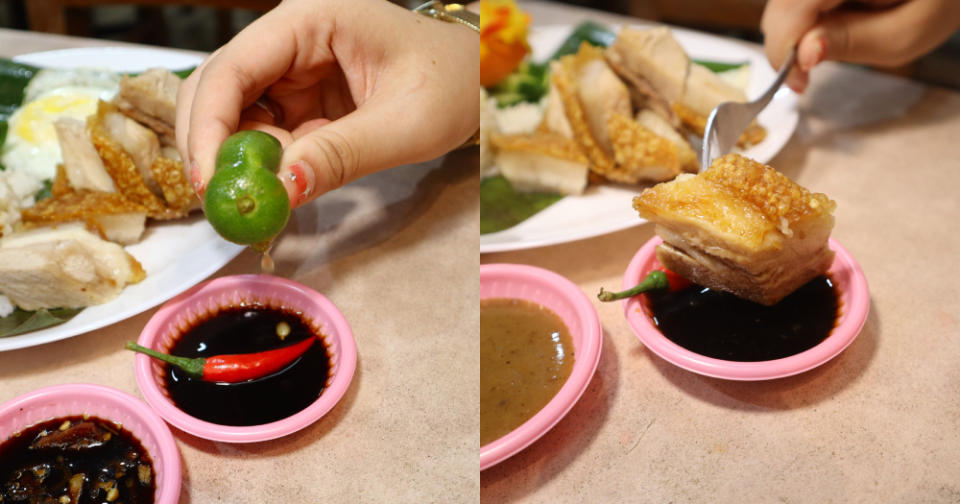
We squeezed the calamansi into the soy sauce with the chilli padi.
“Filipinos like their food sour.” exclaimed Kai Le.
I dunked the lechon into the mixture and it tasted savoury with an acidic kick— interesting, indeed!
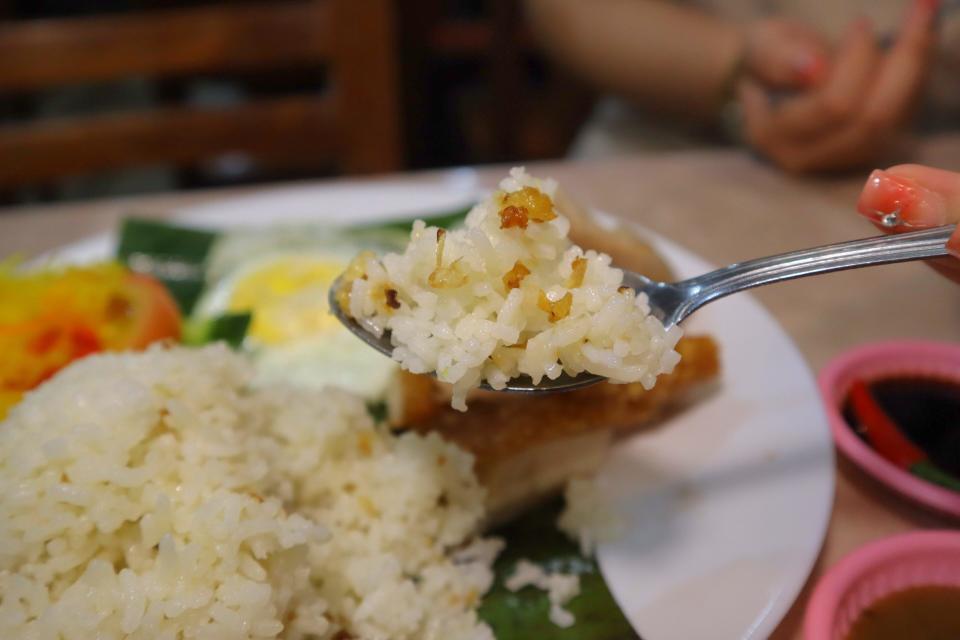
I was impressed with the garlic rice which possessed a slight oiliness akin to chicken rice. Embedded with fried garlic bits, it was aromatic and tasty.
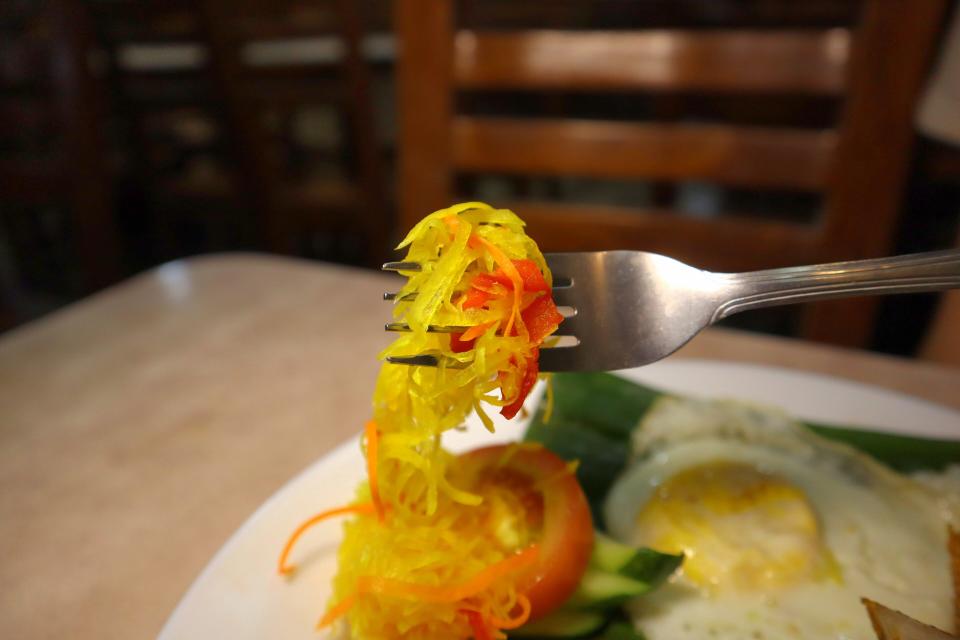
A shoutout to the pickled papaya salad is a must. Tangy and featuring shreds of carrot and red capsicum, it added a palatable dimension, effectively cutting down the overall richness, similar to our local achar.
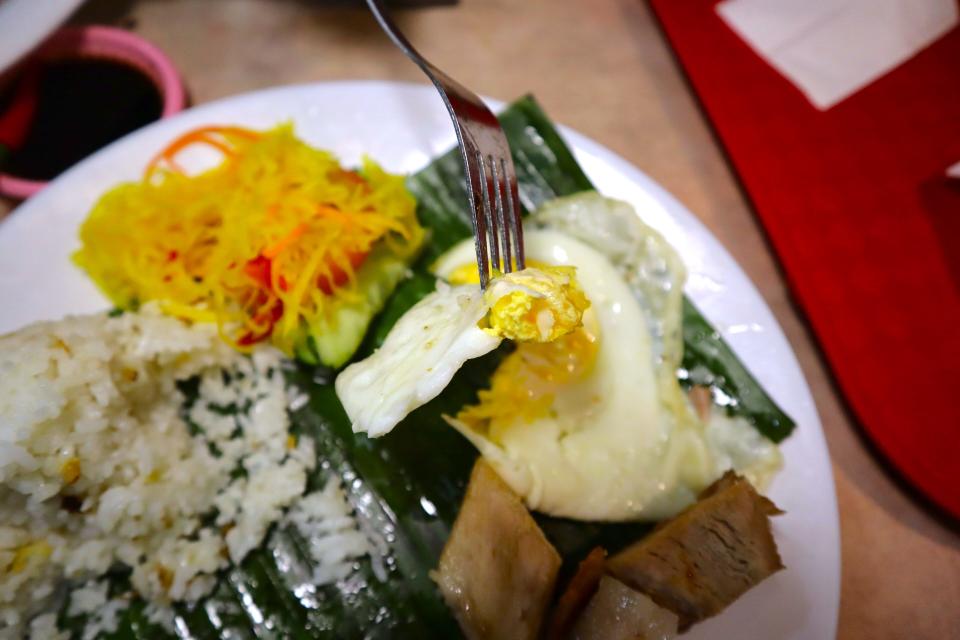
My only gripe with the dish was the fried egg, as it had an overdone yolk. Had the yolk been runny, it would have undoubtedly enhanced the overall experience.
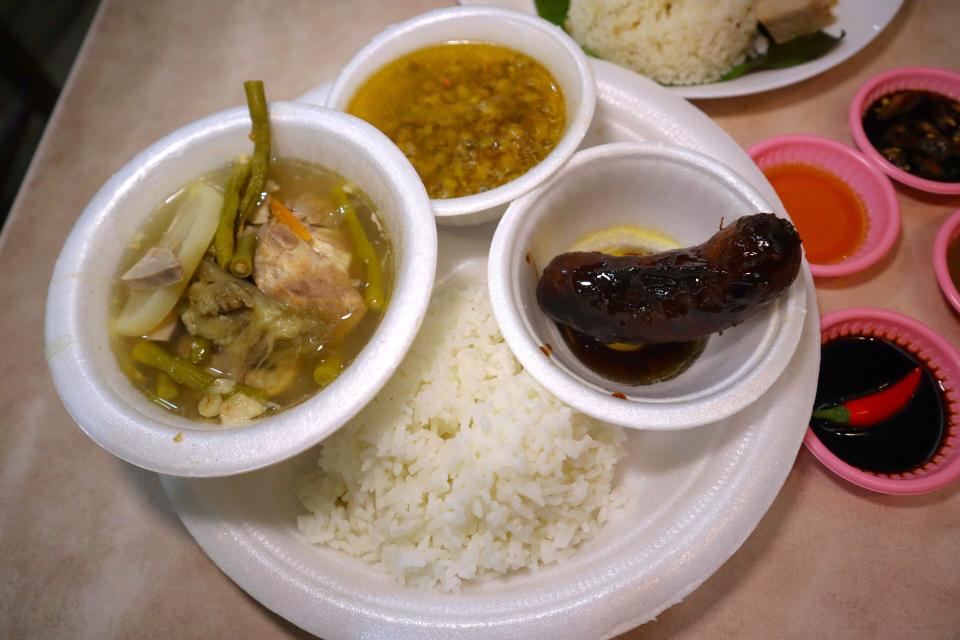
We also selected 3 dishes ‘cai fan‘ style to go with plain rice from their vast selection of dishes. We chose Sinigang, which is supposedly one of their staples, Longaniza, a sausage of sorts and Ginisang Monggo, a bean stew.
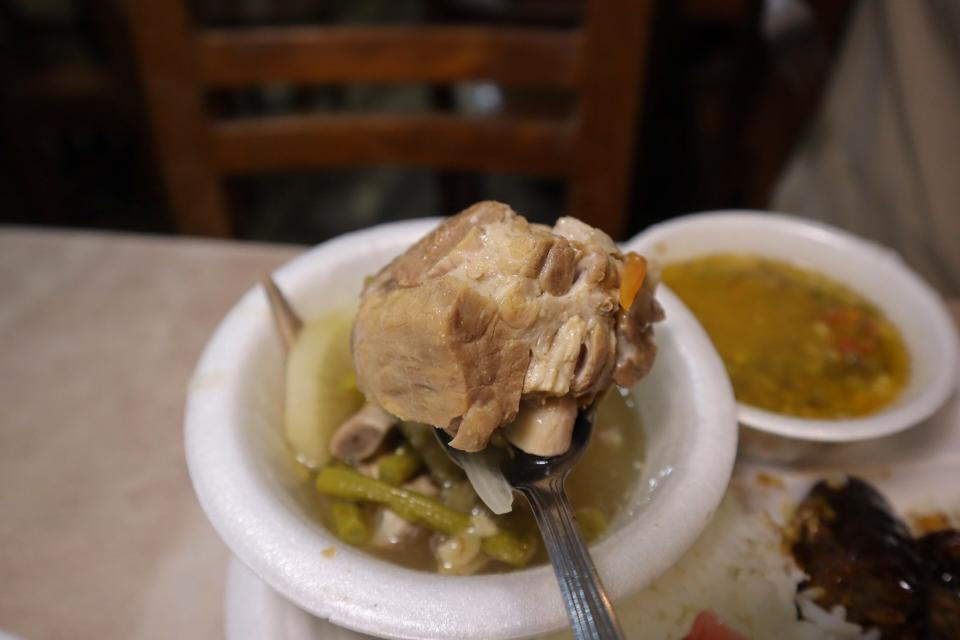
The sizable pork pieces had an excellent meat-to-fat ratio, providing a sour and appetising flavour attributed to the tamarind in the soup. I found it amusing that it tasted just like my Nyonya grandmother’s salted vegetable duck soup.
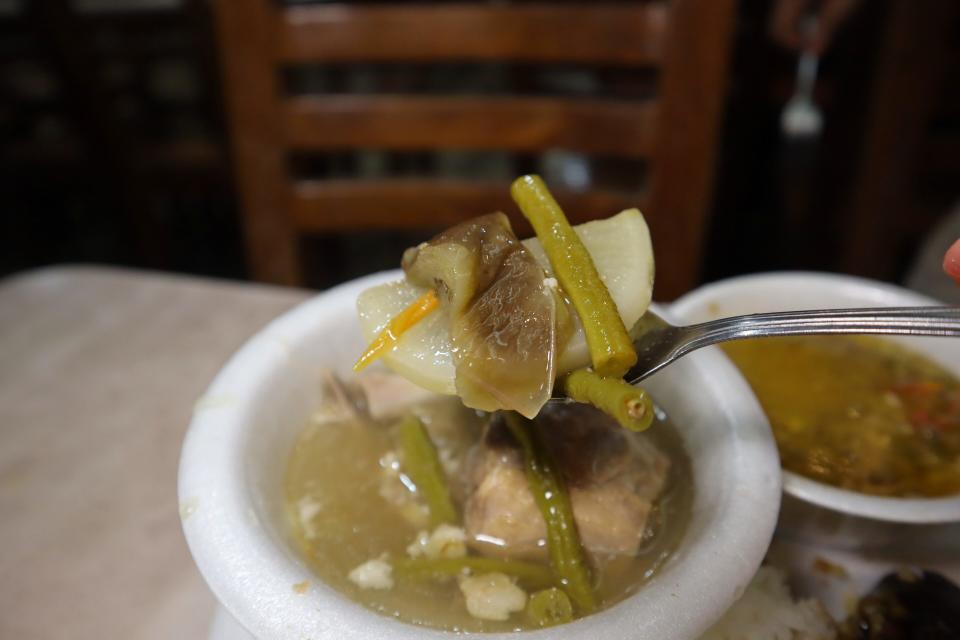
The Sinigang also included pieces of eggplant, daikon, and long beans. I showed a picture of it to my ex-colleague, Karlson, who hails from Pampanga, aka the culinary capital of the Philippines.
He remarked, “Why does it look so pale and underwhelming? Well, as long as it’s sour, it’s good to go!” I suppose it’s always best to ask a native.
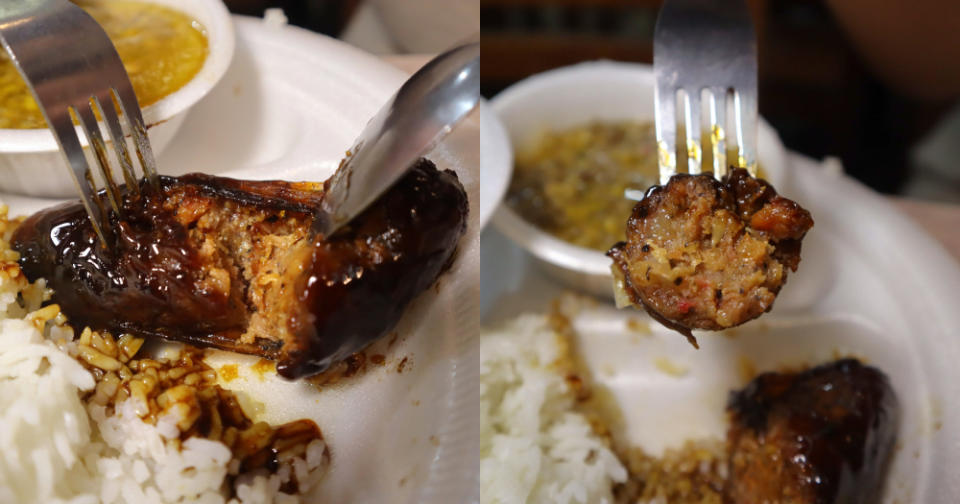
The Longaniza was a cured sausage with a slightly thick casing, proving rather challenging to separate with our fork and spoon. In terms of taste, it carried a subtle sweetness and hints of heat from the black pepper glaze used.
Kai Le mentioned that the sauce was too sweet and the sausage wasn’t sour enough. Personally, I had no issues with it and quite enjoyed the dish.
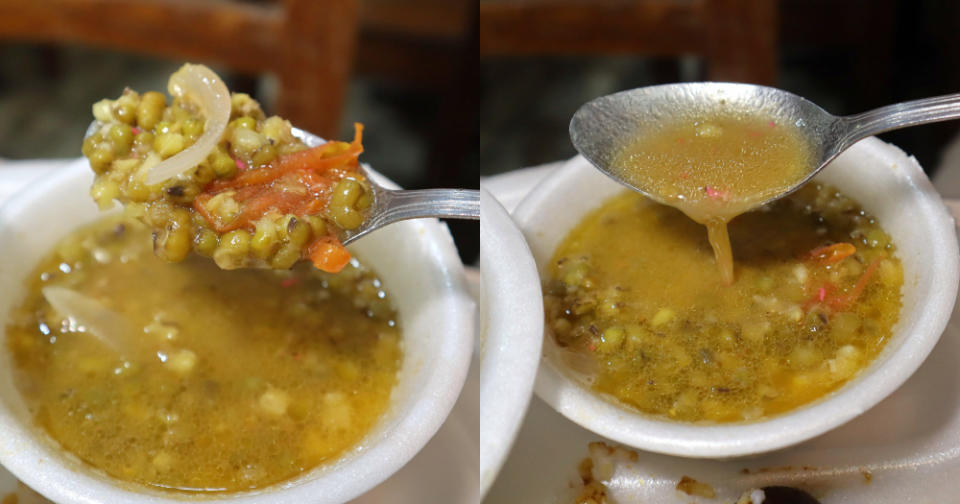
At first glance, the Ginisang Monggo looked like a photocopy of a bowl of green bean soup. Kai Le said that the consistency should be thick and not watery like what we had. The stew consisted of green beans, sliced onions and tomatoes.
There were also tiny pink bits which turned out to be bagoong, a fermented shrimp paste. Karlson mentioned that this dish is a staple on Fridays when the majority of Catholics abstain from eating meat.
However, the flavour profile of this dish appeared to lack depth, as it tasted slightly savoury and nothing more. This turned out to be our least favourite.
Final thoughts
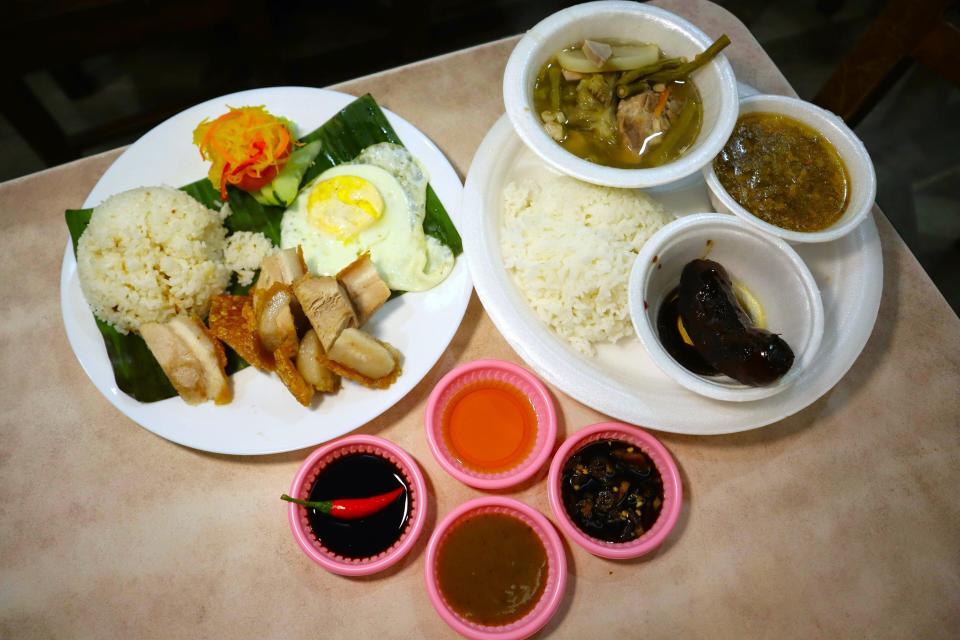
Dining at Kabayan Filipino Restaurant was an interesting experience, as I exposed myself to various unexplored flavour combinations. I’m glad to have expanded beyond my small culinary bubble and can proudly say that I’ve tried a few local favourites from Filipino cuisine.
I’m looking forward to exploring another Filipino establishment soon and trying out different dishes.
Order delivery: foodpanda
Expected damage: S$7 – S$12 per pax
The post Kabayan Filipino Restaurant: Filipino roasted pork with garlic rice & cai fan with over 20 dishes appeared first on SETHLUI.com.


